What will the rest of 2024 bring for small businesses?
In this guide, we’re covering 10 of the hottest small business trends you should keep an eye on.
They focus on different aspects of business—from digital marketing to workforce management.
Let’s get started.
1. More Consumers Will Involve Sustainability in Purchasing Decisions
Consumers are growing more concerned about the environmental impact of their purchasing choices. Which means businesses need to focus on sustainability more than ever.
In fact, 68% of consumers report that a company’s sustainability practices have “at least somewhat of an impact” on their purchasing decisions, according to Visa’s Global Back to Business Study.
The same study further reveals that more thanthree out of four consumers are willing to pay more for sustainable products/services.
Patagonia, an outdoor recreation clothing retailer, is a great example of a brand actively incorporating sustainability measures. Their environmental responsibility programs page serves as a proof of their focus on sustainability:
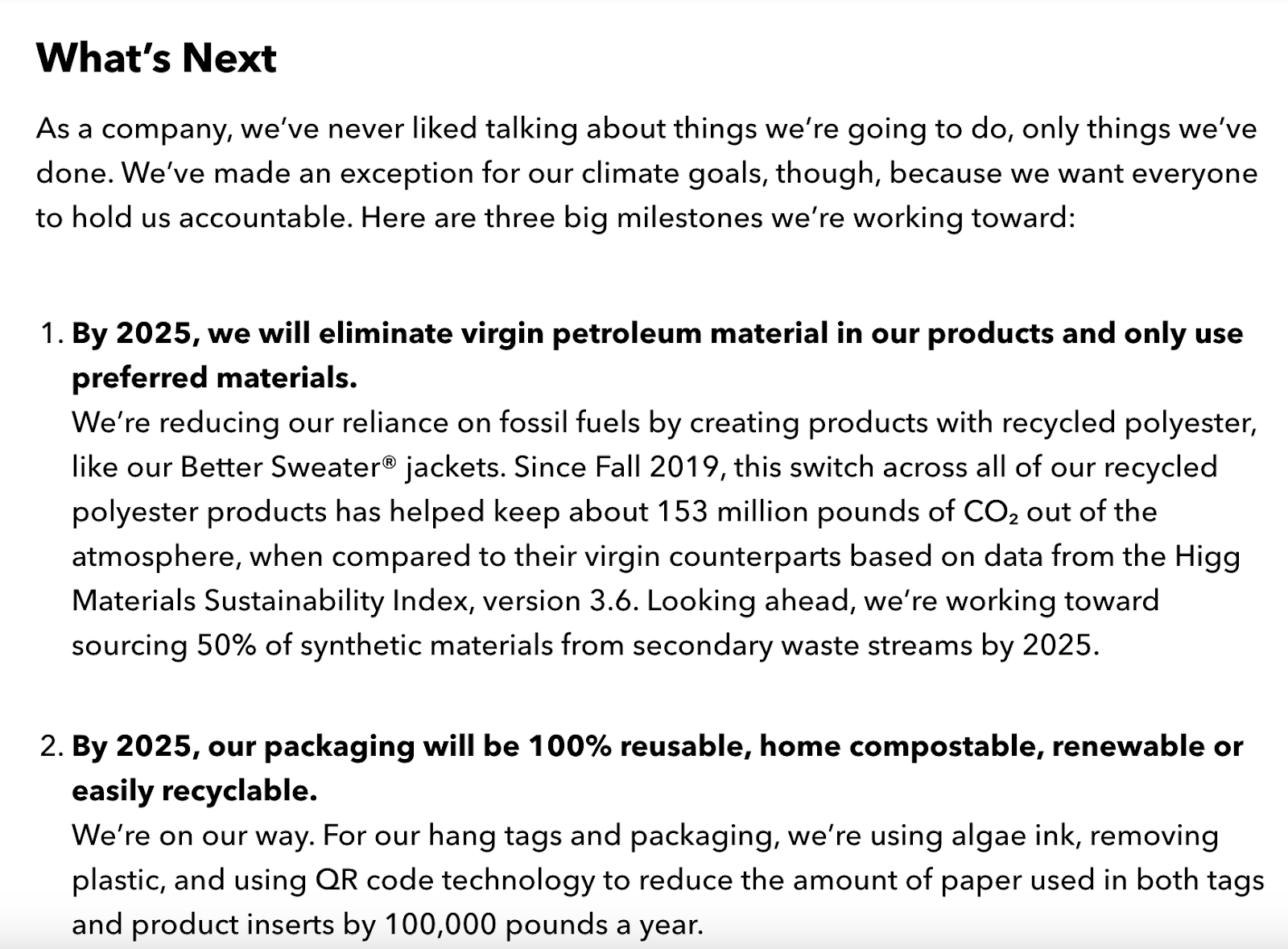
Here are a few sustainability practices to implement and promote to your target audience:
- Re-evaluate your supply chain to find ways to minimize your environmental footprint
- Use eco-friendly packaging like compostable materials to cut back on waste
- Try sustainable delivery methods like using electric vehicles to reduce emissions
2. The Use of Generative AI Will Increase
More small businesses are expected to increase their use of Generative AI tools. Two out of three small business owners plan to try out Generative AI within the next 12 months, according to a Freshbooks survey.
It makes sense.
Generative AI can help small businesses do more in less time and at a lower cost. Like creating social media content, writing blog post outlines, generating emails, etc.
For example, you can use a Generative AI platform like Midjourney to produce creative and engaging images based on prompts. You can also upload your own images for reference.
Here’s an image we created using Midjourney for a doughnut shop based in Chicago:

Another generative AI use case is Semrush’s ContentShake AI. This tool helps you generate content ideas, build outlines, write articles, and optimize content using competitive market data.
Here’s an example of a blog post outline created with ContentShakeAI:
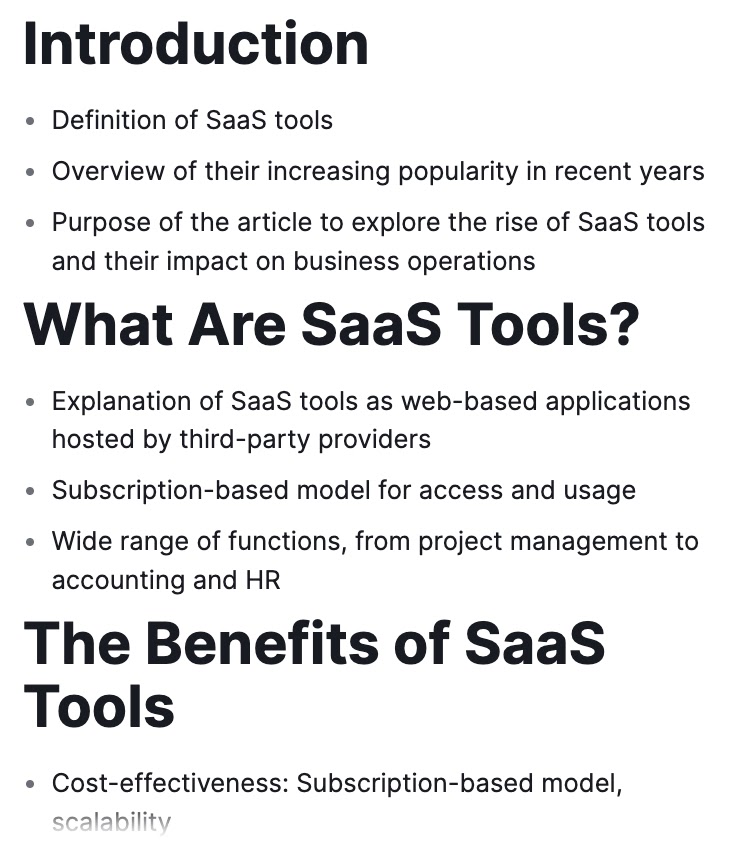
Here are some other popular ways small businesses can use generative AI:
- Generate job descriptions
- Improve customer service communication
- Generate on-page SEO elements for your website pages like title tags and meta-descriptions
- Extract insights from datasets
3. Employees Will Continue to Prefer Remote Work
A FlexJobs survey shows that 96% of employees want to work remotely at least part of the time. Which means small businesses that offer remote work will likely see an increase in employee satisfaction and loyalty.
For example, Scilife, is a fully-remote tech startup with employees based in different parts of the world. Which they mentioned in this LinkedIn post:
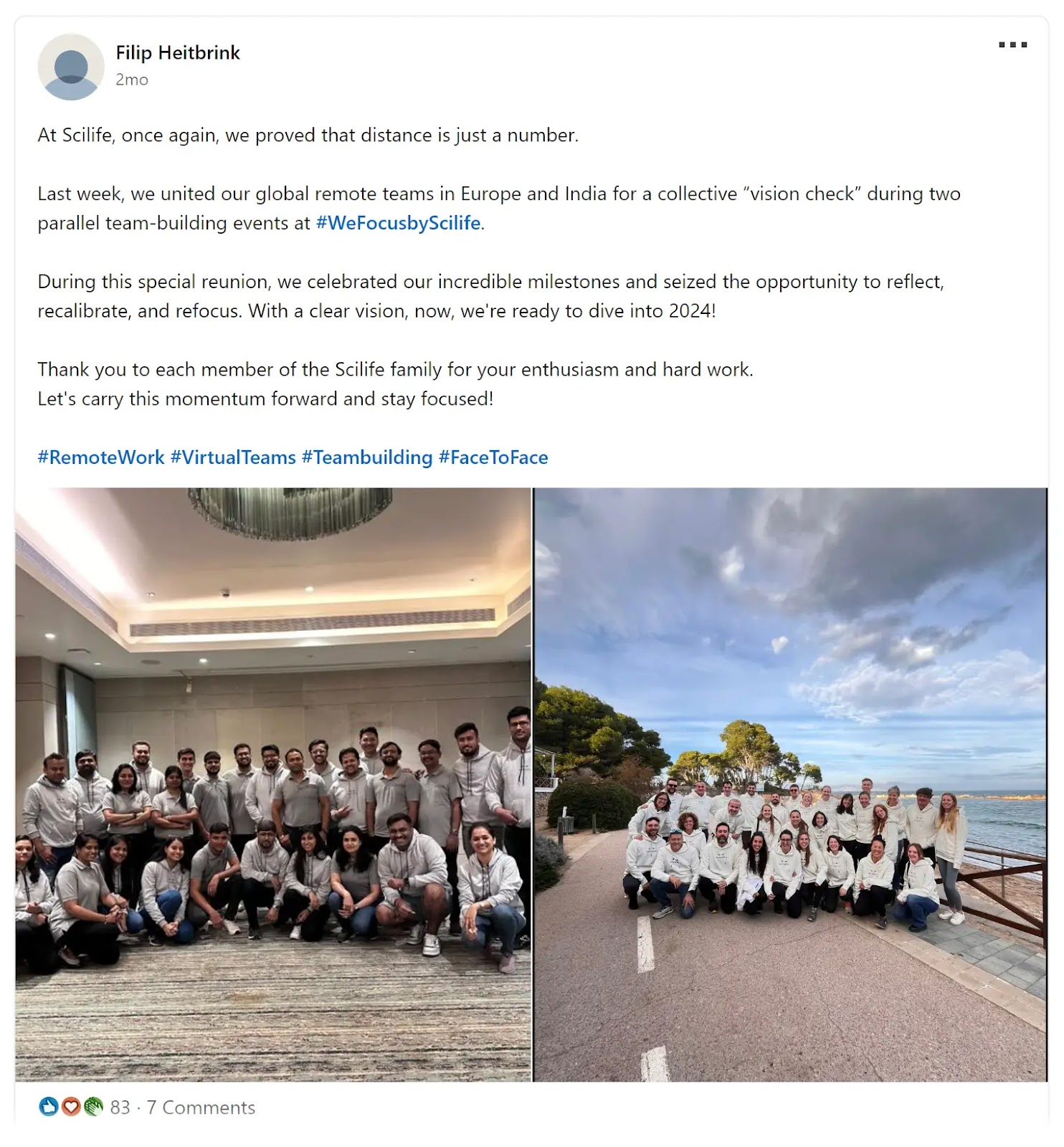
Being 100% remote helps them attract and hire top talent while also reaping cost savings on office space and utilities.
While adopting remote work may not be possible for all kinds of businesses, those that can embrace remote work will have a competitive advantage.
How can you ensure a successful transition to remote work?
Here are a few tips:
- Invest in collaboration and communication tools that keep everyone on the same page
- Develop clear remote work policies that help everyone understand expectations
4. More Businesses Will Invest in Nano- or Micro-Influencer Marketing
There’s a strong preference among companies to work with nano- and micro-influencers over large-scale influencers. Because they’re more affordable and can generate better engagement.
Aspire’s The State of Influencer Marketing 2024 reveals nano-influencers have a 4.39% average engagement rate and micro-influencers have a 2.59% average engagement rate. But macro-influencers only have an average engagement rate of 1.44%.
But collaborating with small-scale influencers doesn’t guarantee success.
To make your campaigns effective, you must find the right influencers whose followers closely resemble your target audience.
For this, you can use a tool like Influencer Analytics to discover influencers based on your specific criteria.
Plus, the tool gives you insights into influencer pricing ranges. So you can plan your budget accordingly.
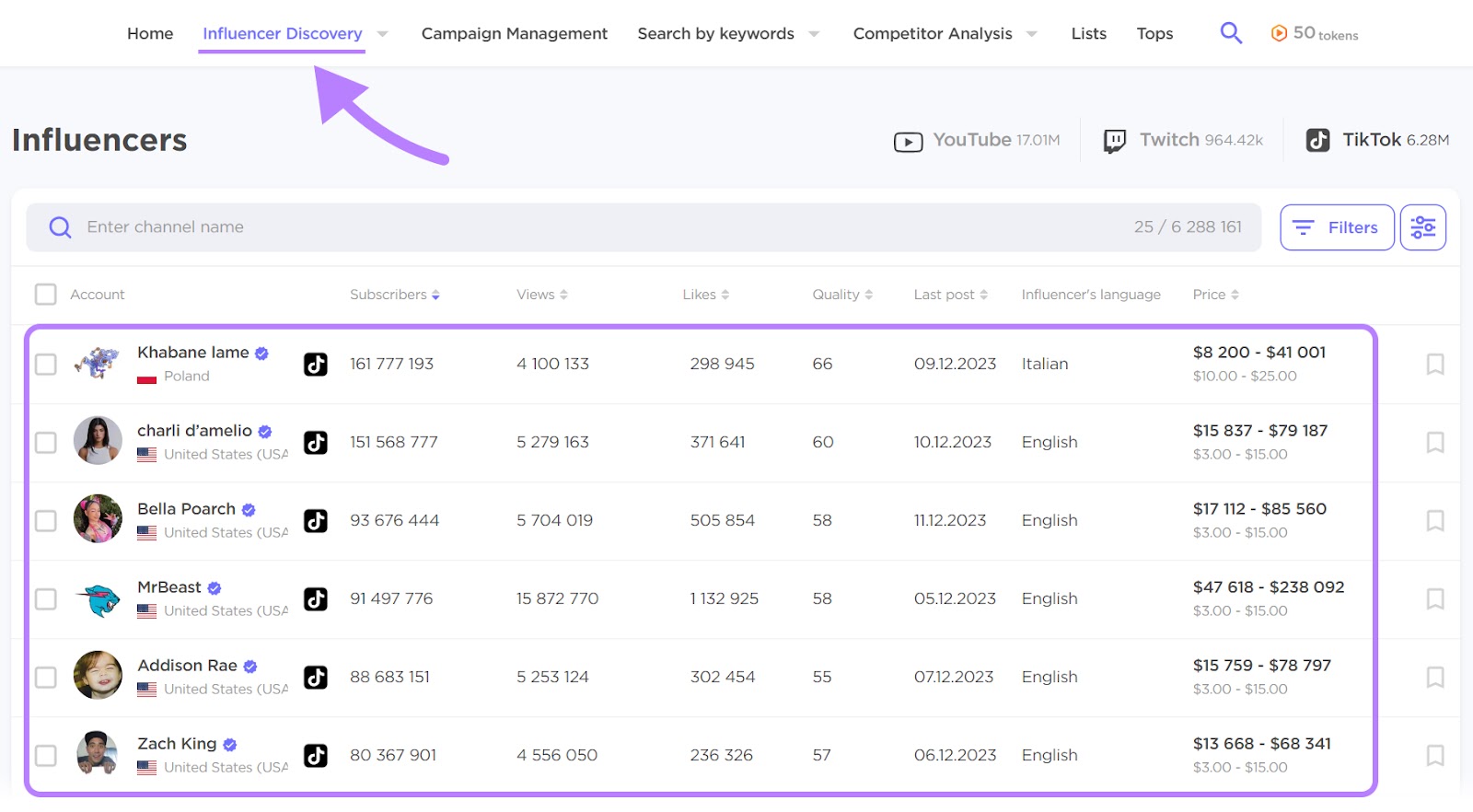
Further reading: How to Find Influencers for Your Brand (Not Just on Instagram)
5. Businesses Will Prioritize Employees’ Mental Health
Small businesses that prioritize their employees’ well-being will likely see a rise in productivity and retain their most valuable talent. Because employees are favoring these companies.
And a report from the American Psychological Association supports this—indicating 92% of employees believe it’s very or somewhat important to work for a company that provides mental health support.
Here’s what you can do to help:
- Give employees more control over how they work: If possible, let your employees create their own work schedules and offer remote or hybrid options
- Avoid tracking your employees’ productivity: Just because someone works more hours doesn’t mean they’re more productive. Rather than tracking your employees’ productivity based on hours worked, measure the results
- Provide mental health benefits: These include benefits like educational workshops and access to mental health professionals
6. Small Businesses Will Prioritize Cybersecurity
Despite having fewer resources, small companies are increasingly taking measures to protect themselves from cyberattacks.
In fact, 54% of small business owners are more concerned about cybersecurity now than they were previously.
To prevent cyberattacks from disrupting your business, here are some measures you can take:
- Implement two-factor authentication
- Increase security budget/headcount
- Introduce more stringent security protocols for vendors and third parties
- Implement virus or malware protection
- Implement password/access controls
7. Small Businesses Will Leverage User-Generated Content
User-generated content (UGC) is any kind of promotional content created by your customers. Since UGC comes from real customers, it carries a level of authenticity and trust that traditional marketing content may lack.
EnTribe’s The State of UGC 2023 report reveals that 83% of consumers are inclined to purchase from brands that share real customer content. Proving customers want to see, hear, or read authentic experiences before making purchasing decisions themselves.
Dieux Skin, a skincare and accessories brand, loves sharing UGC on its Instagram profile.
This content heavily focuses on how Dieux’s customers use their products and how those products make them feel.
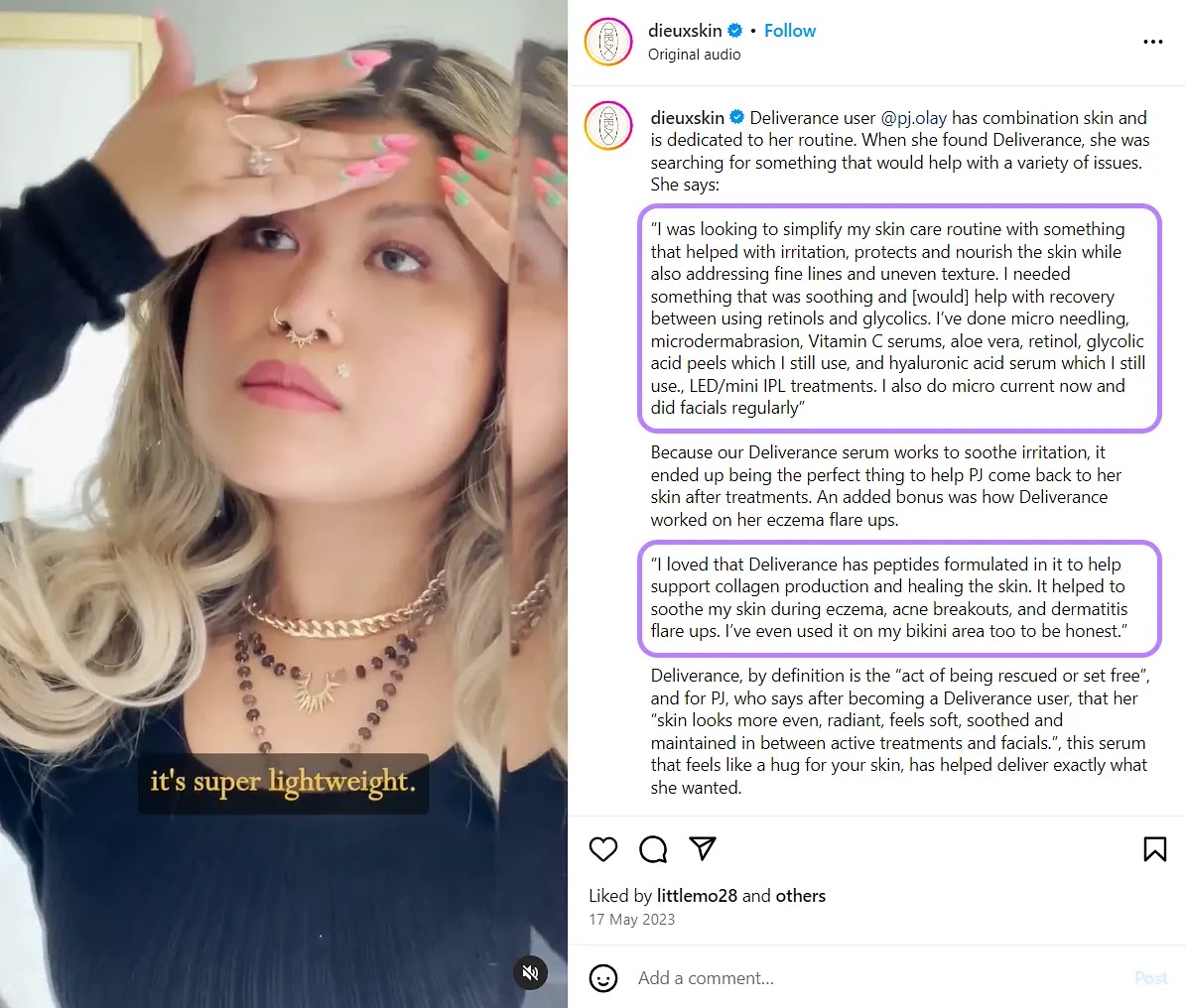
Small businesses can leverage this trend by resharing Instagram Stories created by real customers, incorporating UGC into videos, using testimonials on their websites, etc.
8. Google SGE Will Revolutionize the Way People Use Search Engines
Google’s Search Engine Generative Experience (SGE) is an experiment that uses generative AI to provide users with quick overviews of the topics they search—without requiring them to click on individual results.
These results appear at the top of the search engine results pages (SERPs) and look like this:
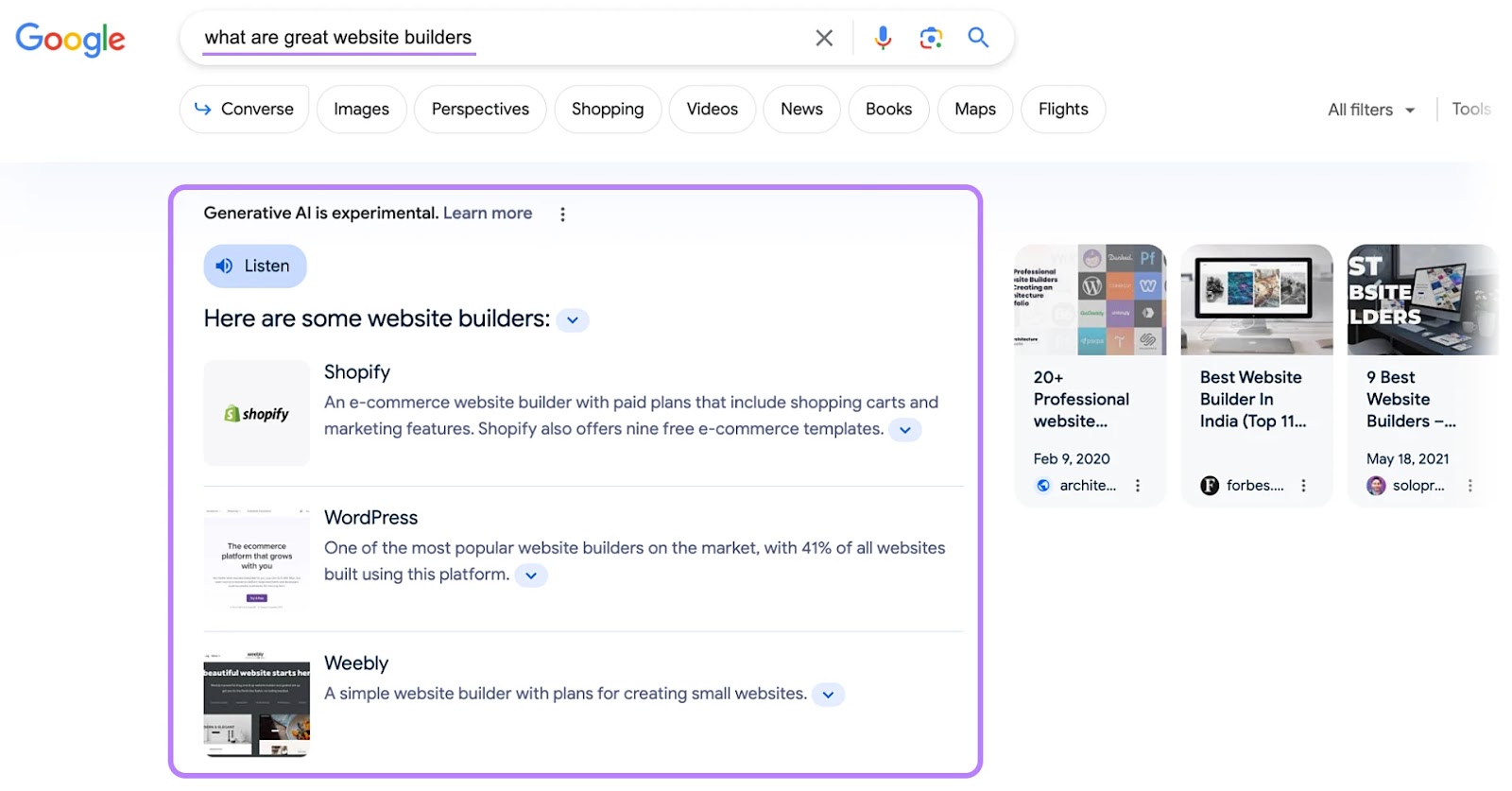
Google SGE delivers clear and concise answers to search queries by compiling information from the web. And includes links to sources it references.
To increase the chances of your content appearing in SGE, you need to optimize it. And one of the best ways to do that is to focus on creating content around long-tail keywords.
This is because SGE seems to be encouraging people to search for longer, more detailed queries. Like "cardigan sweaters for women'' instead of just “sweaters.”
To find the best long-tail keywords for your business, use the Keyword Magic Tool.
Enter a seed keyword (a broad phrase related to your business), choose a location, and click “Search.”

Now, you’ll see a list of related keywords along with their respective search volume (how many people search for these keywords each month), search intent (the reason behind a searcher's query), keyword difficulty score (a measure of how difficult it is to rank well for the keyword), and more.
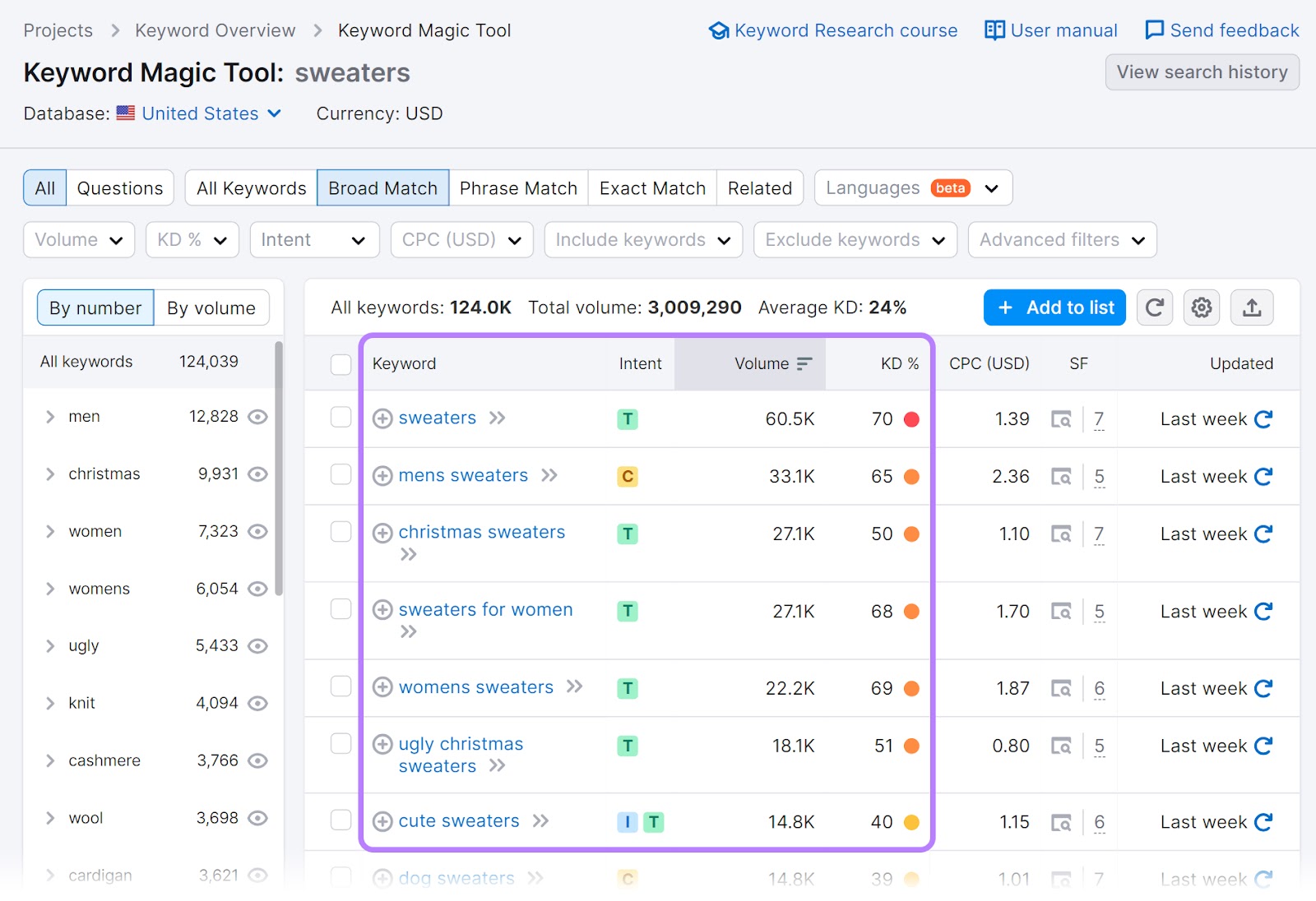
From here, you can find long-tail keywords by clicking the “Questions” filter.
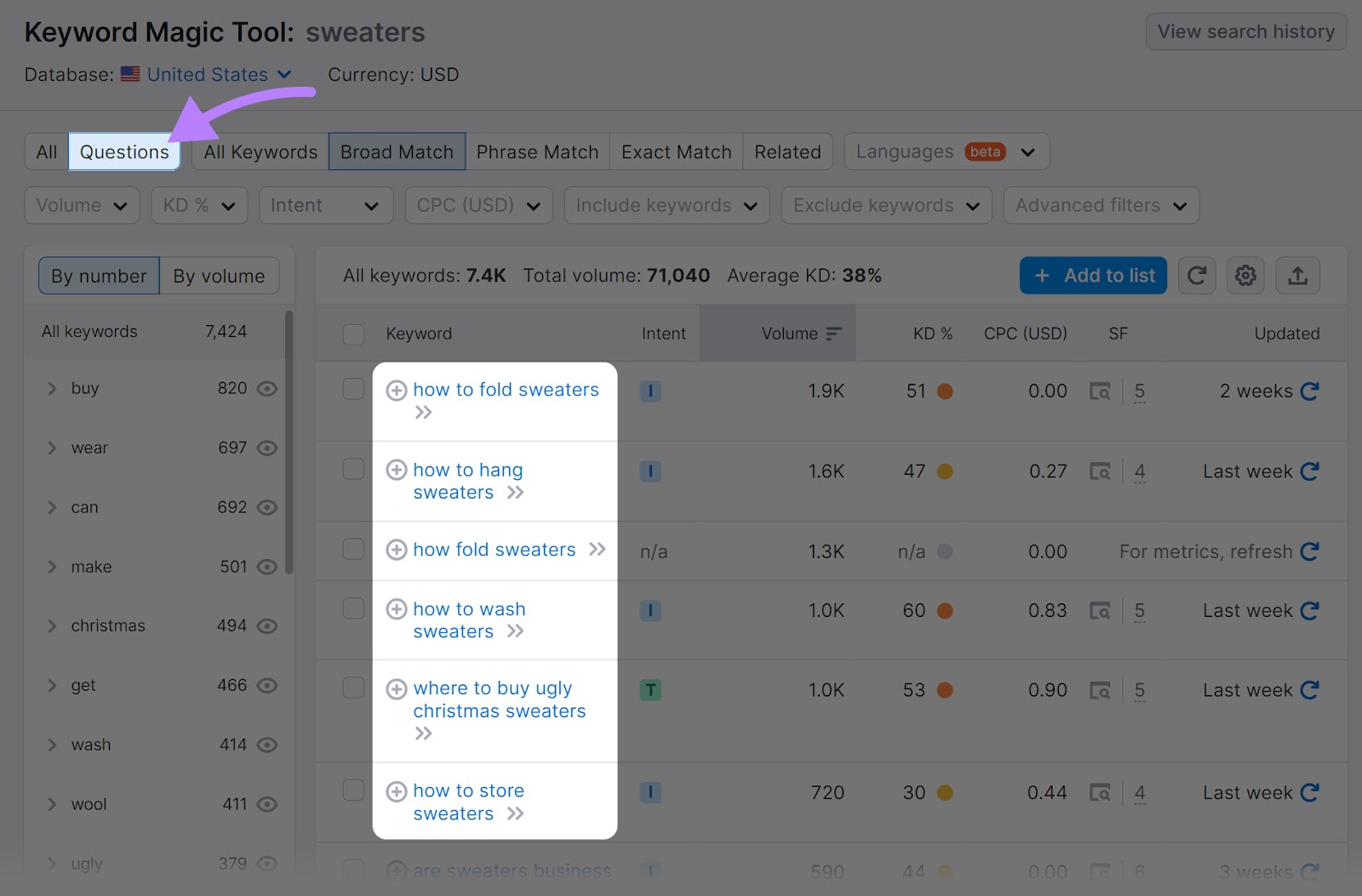
This will give you a list of question keywords (which are typically long-tail phrases) you can use in your content.
9. More Businesses Will Adopt Pay Transparency
There’s a good chance small businesses will move toward greater pay transparency—the practice of openly communicating information about compensation to candidates and employees.
Half of the U.S.-based job listings mention some sort of salary information, according to Indeed.
Here’s an example:
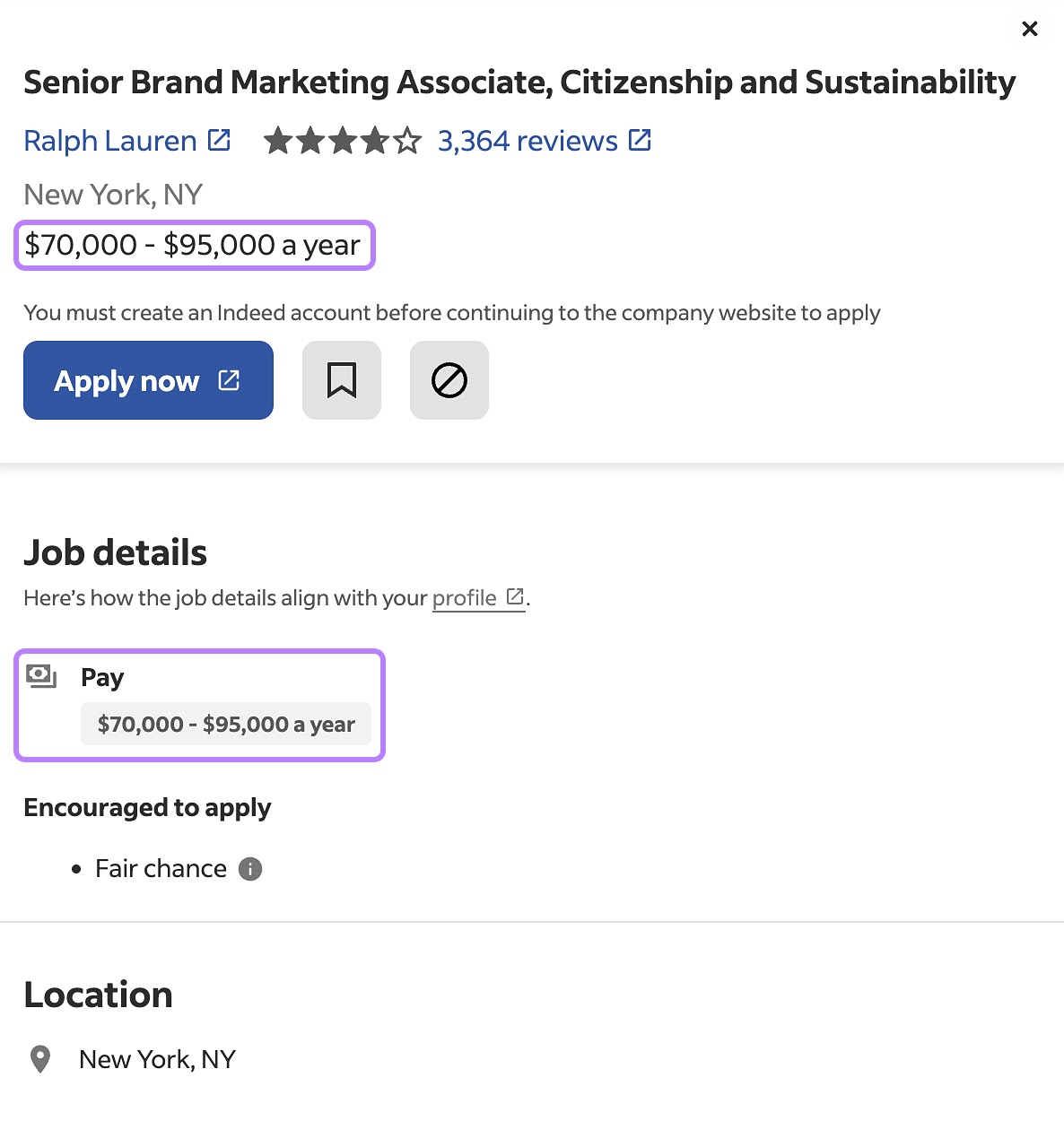
Some states have even adopted pay transparency regulations.
For example, New York’s Pay Transparency Law requires private employers with four or more employees to add a range of pay for all advertised jobs, promotions, or transfer opportunities.
Plus, being forthcoming about pay also helps build trust in the workplace, increase employee retention, and motivate employees to perform well.
10. More Small Businesses Will Leverage TikTok
Consumers are spending more time on TikTok. Research shows use has grown 12% since 2021.
As a result, more small businesses are expected to build their presence on the social media platform.
Here are some ways any small business can develop a strong presence on TikTok:
- Create authentic and relatable content: Share behind-the-scenes glimpses, day-in-the-life snippets, and other types of compelling stories
- Use engaging captions: Craft catchy and concise captions that prompt users to interact with or share their thoughts on your content
- Collaborate with influencers: Partner with TikTok influencers in your industry to expand your reach
Further reading: TikTok SEO: The Ultimate Guide for Boosting Your Profile Visibility
Use Small Business Trends to Gain Competitive Advantages
These small business predictions can help you keep your customers and prospective customers happy, improve your business operations, and stay ahead of the competition.
That’s even more true if you take advantage of the right digital marketing tools.
Semrush gives you access to a complete suite of options for SEO, content marketing, paid advertising, and more. Which you can use to start capitalizing on these trends before they become commonplace.
